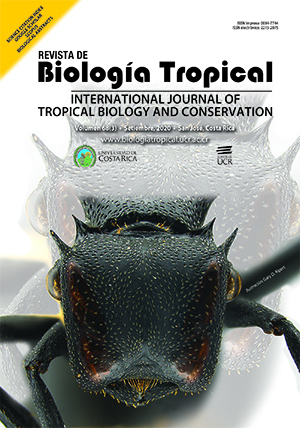Abstract
Abstract. Introduction: The Vismia genus belongs to the Hypericaceae family and comprises around 57 species of which 17 have been located in Venezuela. Previous investigations have been carried out in extracts as well as pure isolated compounds, revealing antimicrobial, antioxidant and anti-HIV, among other, biological activities. Objective: This investigation aims to determine the cytotoxic activity of essential oils from leaves of Vismia baccifera Triana & Planch (VBJ and VBV) and Vismia macrophylla Kunth (VM) collected in three different locations of the Venezuelan Andean region. Methods: Essential oils obtained by hydrodistillation were analyzed using gas chromatography-mass spectrometry (GC-MS) and their cytotoxic activity was analyzed following the MTT (3-[4,5-dimethylthiazol-2-yl]-2,5-diphenyltetrazolium bromide) assay. Human tumor cell lines from SKBr3, MCF-7 and PANC-1, two breast carcinomas and one pancreatic adenocarcinoma of ductal type, were tested with the oil samples and human dermis fibroblasts were used as non-tumor cells. Results: β-caryophyllene and trans-caryophyllene were present as major components in VBJ and VBV, respectively, while γ-bisabolene was the main component in the VM sample. Anticancer activity was observed on V. baccifera essential oil against SKBr3, MCF-7 and PANC-1. The selectivity index showed that VBV is highly selective against the SKBr3 cell line and has no activity against non-tumor cells. Conclusions: These results are considered a contribution to natural products research and may provide supportive data for future studies on cancer.
##plugins.facebook.comentarios##

This work is licensed under a Creative Commons Attribution 4.0 International License.
Copyright (c) 2020 Janne Rojas Vera, Alexis Buitrago Díaz, Francisco A. Arvelo, Felipe J. Sojo, Alírica I. Suarez, Luis Rojas


